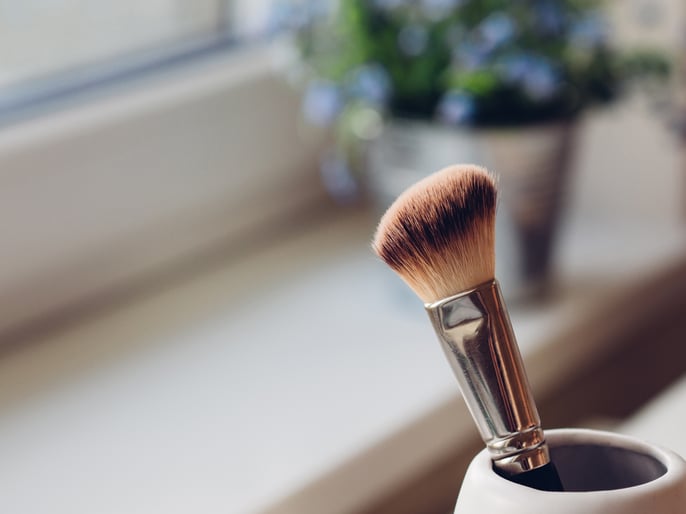
Women, and increasingly men too, use cosmetics and makeup on a daily basis. We grow up with them and rarely give a second thought to the number of products we rub into our skin. Many of today’s products for cleanliness and beauty are manufactured with a myriad of artificially created substances. Sometimes this is a good thing as they’re often cheaper than the natural alternatives, putting them into the reach of just about everyone’s budget.
Because we couldn’t imagine life without shampoo, talc, or a dab of eye shadow and lipstick, and because it’s such a taken-for-granted part of life, these items are last on the list of things thought to trigger migraines.
There is evidence, however, that we may be inadvertently making headaches worse or more frequent through our use of beauty products. Much of the evidence is anecdotal, but there is also scientific study and research that goes some way towards backing up what people are saying. There is no doubt that what we rub into our skin passes through, enters the bloodstream and from there gets into internal organs. So it’s logical that some of the chemicals and other ingredients in makeup could build up in the body and trigger unwanted reactions such as migraine headaches.
Here are some of the substances to watch out for:
Formaldehyde
This substance is used in many of the products that line drugstore and supermarket shelves, and consequently our own bathroom shelves too. It’s found in moisturizers, bubble baths, shampoos and conditioners as well as many makeup products. What makes this substance harder to spot is that it may not be listed on the label of the product. For instance, DMDM hydantoin and imidazolidinyl urea could release formaldehyde, although you won’t specifically find it listed. And if you’re wondering why it sounds familiar, yes, it’s the substance used to embalm the deceased. It’s known to sometimes trigger allergic reactions that can lead to migraines, as well as asthma and others.
Parabens
Long used to stabilize and preserve cosmetic creams, parabens have been in wide use in the cosmetics industry since the 1930s. You may recognize other chemical names which parabens are often listed under: ethyl, propyl, butylparabens or methyle. Parabens are endocrine disruptors, meaning they can interfere with our hormone systems. They have been linked with cancers and birth defects, and since for many women their migraines are linked to hormonal cycles, the substance may play in part in their migraine pattern.
Propylene Glycol
This substance is developed from petroleum or is manufactured from corn oil. It’s an alcohol and is the active ingredient in common, industrial anti-freeze products. While some of the chemicals used in industrial products differ from their counterparts sold for domestic use, propylene glycol is not one of them. There’s no difference between the PG used in personal care products and that used in industry. In cosmetics, they’re used to prevent the product either freezing or melting. It’s been known to cause damage to the central nervous system, thought to be involved in migraine suffering in some people.
Fragrances
Even people who shun strong personal perfumes, or who find heavy scents trigger migraine headaches, usually like a little fragrance in their cosmetics. Creams smell and feel lighter when their fragrance seems natural and fresh. Often, the type of smell is blamed for the onset of migraine, where in fact it’s more likely to be caused by an allergic reaction to the chemicals that were used in its production. When it comes to allergens, fragrances are in the top five most common, cited as affecting 1 in 50 people by the Scientific Committee on Cosmetic Products and Non-food Products in the EU. Possible damage to the immune system is one potential effect of the chemicals used in the production of artificial fragrances.
Labels listing ingredients can often be misleading if you’re not sure what you’re looking for. Look for the list of ingredients following the word ‘fragrance’ and go for those that use essential oils instead of anything listed as ‘parfum’ or ‘fragrance’. An alternative is to use simple products that are listed as fragrance free.
When evaluating which makeup or other beauty products may be affecting your migraine, it’s important to realize that there’s no definite cause and effect. While it’s something to be aware of, there’s no guarantee that by switching to products known to contain none of the potentially harmful ingredients listed above will cure migraine. But, if you’ve tried just about everything else and still found no lasting relief, hunting down natural beauty products could give you the missing link.


